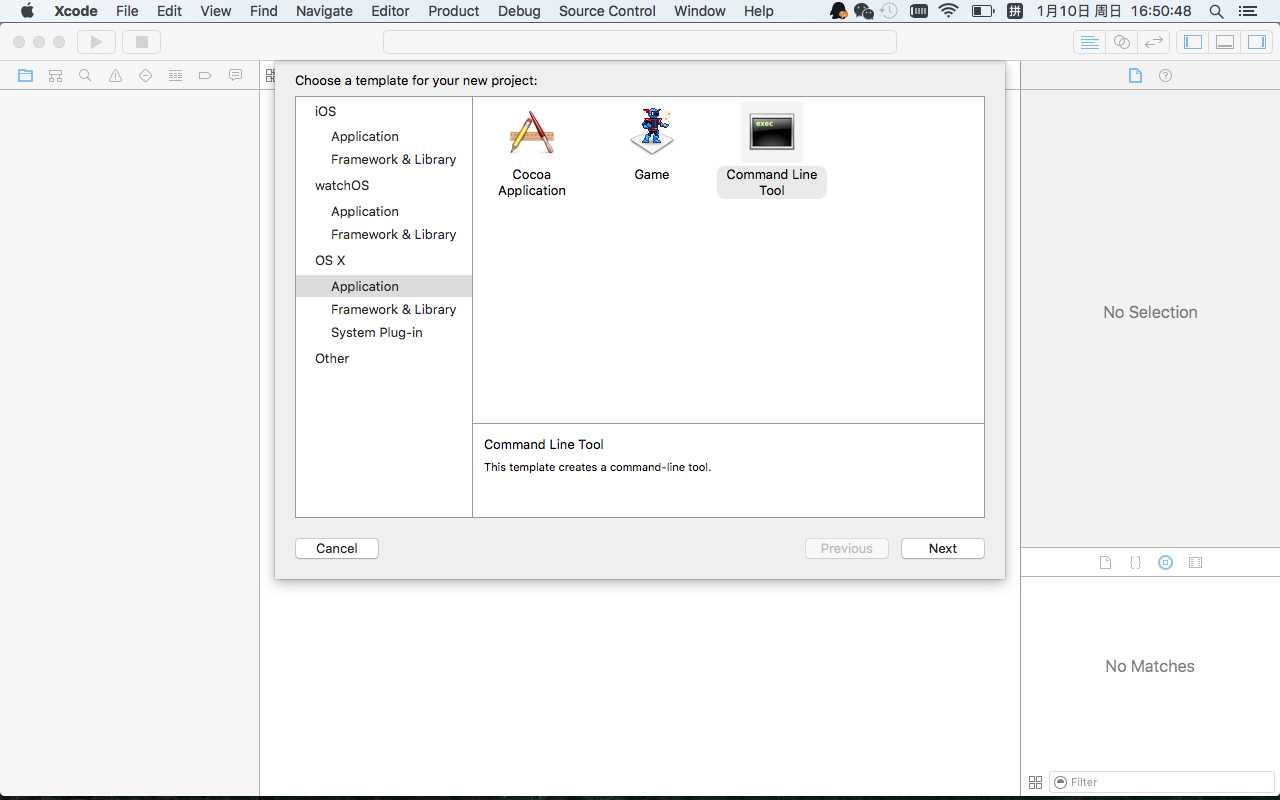标签:
1.前言
上一篇已经介绍了App Delegate、View Controller的基本概念,除此之外,分别利用storyboard和纯代码创建了第一个Xcode的工程,并对不同方式搭建项目进行了比较。这一篇文章,我准备为大家介绍一下奇葩的Objective-C语言的语法和使用。这篇文章主要讲Objective-C的理论概念。
2.学习目标
2.1 Objective-C语言面向对象的特性与其他语言(C++)类比学习,声明定义一个MyObject类,并创建这个类的实例。
2.2 Objective-C语言常见语法概念概览。[协议,分类,扩展,消息机制,动态特性selector,KVC,KVO,block,ARC]
3.奇葩的Objective-C语言
对于已经有开发经验的开发者而言,初次接触Objective-C的时候觉得根本不能接受,甚至有种畏惧,oc奇葩的语法简直颠覆了自己的世界观,因为出现了莫名其妙的符号,如, + - [ ]。但是,不要怕,我们慢慢来了解这到底是毛线。
首先,从名字即可看出,Objective-C是一个面向对象的编程语言,也就是它和其他面向对象的语言一样有继承、封装、多态的语言特性,学习的时候可以类比其他语言。当然,如果没接触过其他语言也没关系,那就直接学。那么,就用C++和Objective-C两种语言去声明定义一个MyObject类。
3.1 先看一下C++中声明定义类是如何编写的
3.1.1 C++程序源码
#include <iostream> using namespace std; class MyObject { public: MyObject(); ~MyObject(); void display(); void setValue(int x); int getIndex(); int getKey(); static void classMethod(); private: int index; int key; }; MyObject::MyObject() { cout<<"construct"<<endl; } MyObject::~MyObject() { cout<<"destruct"<<endl; } void MyObject::setValue(int x) { this->index = x; this->key = 1<<(x+2); } void MyObject::display() { cout<<"index == "<<this->index<<endl; cout<<"key == "<<this->key<<endl; } int MyObject::getKey() { return this->key; } int MyObject::getIndex() { return this->index; } void MyObject::classMethod() { cout<<"this is static (or class) method"<<endl; } int main(int argc, const char * argv[]) { // insert code here... std::cout << "Hello, World!\n"; MyObject *object = new MyObject(); MyObject::classMethod(); object->setValue(3); object->display(); int c = object->getIndex() + object->getKey(); object->MyObject::~MyObject(); printf("c = %d\n", c); MyObject object2; object2.setValue(2); object2.display(); return 0; }
3.1.2 控制台打印信息
Hello, World!
construct
this is static (or class) method
index == 3
key == 32
destruct
c = 35
construct
index == 2
key == 16
destruct
Program ended with exit code: 0
3.1.3 代码解释:
以上代码利用C++声明定义了MyObject类
1)定义了公有方法方法:
2)定义了私有成员变量:
3.1.4 特别注意
3.2 再看一下Objective-C是如何定义一个MyObject类的
3.2.1 创建新项目
选择OS X中的Command Line Tool,创建好工程后,按住command+N键创建Cocoa Touch Class,创建一个名为MyObject的NSObject的子类。



这样就创建了OS X的命令行程序,以用于简单演示如何声明定义Objective-C的类
3.2.2 程序源码
1)main.m文件:
#import <Foundation/Foundation.h> #import "MyObject.h" int main(int argc, const char * argv[]) { @autoreleasepool { // insert code here... NSLog(@"Hello, World!"); MyObject *object = [[MyObject alloc] initWithIndex:3]; [object display]; // object = nil; } return 0; }
2) MyObject.h
#import <Foundation/Foundation.h> @interface MyObject : NSObject - (instancetype)initWithIndex:(NSInteger)index; - (void)display; + (void)classMethod; @end
3) .m文件
#import "MyObject.h" @interface MyObject() @property (assign, nonatomic) NSInteger index; @property (assign, nonatomic) NSInteger key; @end @implementation MyObject @synthesize index = _index; @synthesize key = _key; - (instancetype)initWithIndex:(NSInteger)index { self = [super init]; if (self) { NSLog(@"init"); self.index = index; } return self; } - (void)setIndex:(NSInteger)index { _index = index; self.key = 1<<(index+2); } - (NSInteger)index { return _index; } - (NSInteger)key { return _key; } - (void)display { NSLog(@"index == %ld \n key == %ld", (long)_index, (long)_key); } + (void)classMethod { NSLog(@"this is static (or class) method"); } - (void)dealloc { NSLog(@"dealloc"); } @end
3.2.3 控制台打印结果
2016-01-10 17:55:50.401 CompileOC[20792:1052939] Hello, World!
2016-01-10 17:55:50.402 CompileOC[20792:1052939] init
2016-01-10 17:55:50.402 CompileOC[20792:1052939] index == 3
key == 32
2016-01-10 17:55:50.402 CompileOC[20792:1052939] dealloc
Program ended with exit code: 0
3.2.4 代码解释
1) 在main.m文件中创建了MyObject的实例并调用display方法。
2)在头文件中声明了三个公有方法,
- (instancetype)initWithIndex:(NSInteger)index;
- (void)display;
+ (void)classMethod;
3).m文件中
- (void)display
+ (void)classMethod;
4)与C++代码做对比
@interface
@end
之间就可以了,而私有方法不需要在头文件中声明。
@implementation {
@private
int index;
int key;
}
@end
注意实例变量和类的属性并不是一回事,属性和实例变量的本质区别是,属性无法直接访问对象的内部状态,但是可以利用setter和getter方法进行访问,而在setter和getter方法中还可以包含其他逻辑,比如,本文章中
- (void)setIndex:(NSInteger)index
方法,不单为实例变量_index赋值,还用setter的简洁方式
self.key = 1<<(index+2);
为实例变量_key赋值。
那_index和_key实例变量是谁声明的呢?这是Xcode编译器自己生成的:
@synthesize index = _index;
@synthesize key = _key;
上面的代码使用了 @synthesize 编译指令,让编译器分别为属性index和key自动创建实例变量_index和_key。即,自动为属性创建对应实例变量的方法是
@synthesize 属性名 = 实例变量名;
事实上,当没有实现setter方法时,@synthesize指令不写,编译器也可以为属性自动创建实例变量,编译器自动为属性创建的变量名默认为_属性名,在调试的时候可以设置变量观察。
-fno-objc-arc即可4.Objective-C语言常见语法概念
4.1 基本语法概念
4.1.1类元素
1)实例变量
声明方法:
@implementation {
//声明实例变量
}
@end
实例变量是是类封装的数据
2)属性
@property (特性) 类型 属性名;
属性是Objective-C提供的访问对象共享状态的机制,编译器可以自动生成访问实例变量的方法。Xcode自动创建的实例变量默认变量名为“_属性名”
3)类的声明(接口)
@interface MyObject : NSObject
@end
通用的如下:
@interface 类名 : 父类名
@end
说明:
4)类的实现
@implementation {
//实例变量的声明
}
//属性和方法的定义
@end
说明:
5)类的方法:分为类方法和实例方法。
//code here
return 返回值;
}
说明:
“不同的类可以拥有相同的 selector,这个没有问题,因为不同类的实例对象performSelector相同的 selector 时,会在各自的消息选标(selector)/实现地址(address) 方法链表中根据 selector 去查找具体的方法实现IMP, 然后用这个方法实现去执行具体的实现代码。这是一个动态绑定的过程,在编译的时候,我们不知道最终会执行哪一些代码,只有在执行的时候,通过selector去查询,我们才能确定具体的执行代码。”
- (void)requestDataWithIndex:(NSInteger)index forKey:(NSInteger)key completion:(void(^)(NSError *error, id response))completion {
//code here
NSError *responseError = nil;//assume it is responsed from server
NSDictionary *responseData = @{@"message": @"OK"};
if (completion != nil) {
if (responseError != nil) {
completion(responseError, nil);
} else {
completion(nil, responseData);
}
}
}
说明:6)类的扩展
其实就是写在类.m文件中的接口,只不过与类.h中接口相比,在.m文件中声明的实例变量、属性、方法外部不能访问,即实现了方法、属性的私有化。例如MyObject.m文件中
@interface MyObject()
@property (assign, nonatomic) NSInteger index;
@property (assign, nonatomic) NSInteger key;
@end
这段代码就是扩展,并且声明的index和key属性外部不能访问,只能在类的内部访问。
7)分类
分类的目的主要是为了扩展类的方法,比如MyObject类我添加一个NY的分类,创建方法如下:
#import "MyObject.h" @interface MyObject (NY) @end
#import "MyObject+NY.h" @implementation MyObject (NY) @end
说明:
/Users/niyao/GitHub/demo/CompileOC/CompileOC/MyObject+NY.m:10:1: Duplicate interface definition for class ‘MyObject‘
8)协议
@protocol NYProtocol <NSObject>
@optional
- (void)nyOptionalProtocalMethod;
@required
- (void)nyRequiredProtocalMethod;
@end
通用:
@protocol 协议名 <NSObject>
@optional
//可选择实现的方法
@required
//必须实现的方法
@end
@interface MyObject() <NYProtocol>
@property (assign, nonatomic) NSInteger index;
@property (assign, nonatomic) NSInteger key;
@end
说明:
4.2 ARC(Automatic Reference Counting)
系统根据对象被引用的次数计次,当引用计数为零时,释放该对象所占有的内存。
4.3 KVC&KVO
博文推荐
http://blog.csdn.net/kesalin/article/details/8155245
iOS完全自学手册——[三]Objective-C语言速成,利用Objective-C创建自己的对象
标签:
原文地址:http://www.cnblogs.com/nycoder/p/5120043.html